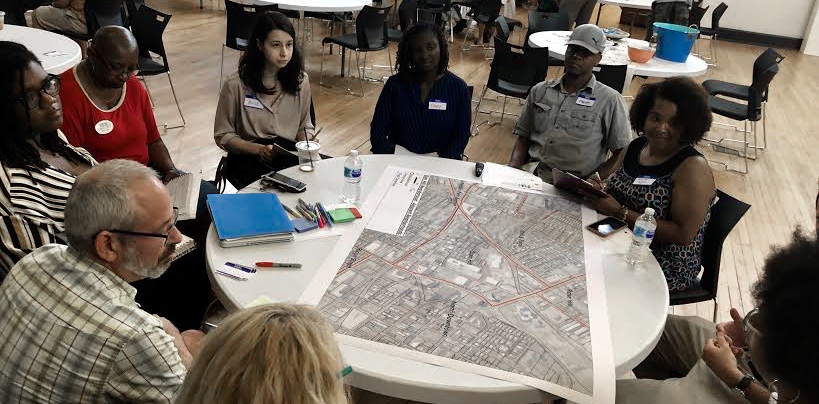Question: What do the last two weeks of a six month community-focused Small Area Plan look like?
Answer: 80% of the heavy lifting.
Last spring, our team (Shelli Brady, Ebony Walden, John Sarvay and Marle Hylton) was asked by New Hill Development Corporation and Virginia LISC to create a community engagement plan and Small Area Plan for Charlottesville’s Starr Hill neighborhood. Last month, that plan was delivered to City Council. The plan consisted of almost 100 oversized pages of maps, illustrations, and recommendations to reimagine the 47-acre neighborhood as the center of Black life, Black culture, and Black wealth creation for the City of Charlottesville. (You can take a look at our 24-page overview of the 108-page plan below).
Shelli, working the impromptu team of community designer, Jodi Dubyoski and graphic designe, Sarah Riddle Culclasure, dialed in long days and late nights of revisions, edits, tweaks and changes – followed by face-to-face meetings with our client and key Charlottesville officials – to create a powerfully visionary roadmap for Starr Hill’s future.
The final deliverable was both detailed and comprehensive. But the Guiding Principles, shaped early on by the community engagement process, resonated strongly with our team. Particularly the first two Guiding Principles, which shaped so much of the final recommendation:
A More Equitable Community: We envision a neighborhood where those who are often marginalized are empowered to congregate and co-create, build and own, and innovate and learn
Promote Black Prosperity: We will create strong pathways for African Americans in Charlottesville to thrive and grow. We envision a neighborhood centered around Black-owned property, commerce and culture with visible access to capital and financing.
With the plan in hand, New Hill Development Corporation is ready to start the heavy lifting with dozens of community partners focused on amplifying the tremendous potential of Charlottesville’s African American residents.









